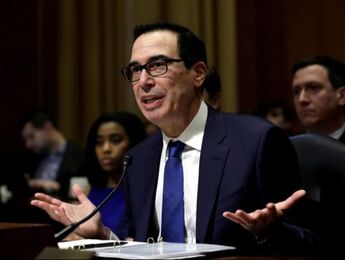TJ Agresti, JD, LLM, CAMFounder and President Archives
February 2021
|
Back to Blog
The Federal Reserve’s new Main Street Lending Program is another chance to secure much needed cash now. The $349 billion Paycheck Protection Program, or PPP, ran out of money 14 days after businesses across the country submitted the first applications. The SBA shut down its application process and ceased enrolling new lenders into the program. Many businesses were left in shock not knowing what to do when the PPP ran out of money. Some businesses are still applying and even getting recommendations from their banks to continue with the process. Some completed their applications before the money ran out and were waiting for their approval. It appears that political survival and the necessity to further prop up the economy forced Congress to approve additional PPP funding. Treasury Secretary Steven Mnuchin told CNN on Sunday 4/19/2020 that he's hopeful that a deal could be reached as early as Sunday to replenish a tapped-out small-business loan program and that the deal would include additional funding for hospitals and testing. "I think we're making a lot of progress," Mnuchin said on Sunday, noting that he has had multiple conversations with Senate and House leadership in recent days. He later added, "I'm hopeful we could get a deal done today. "The Senate could approve the measure as early as Monday and the House on Tuesday. Mnuchin said the agreement so far would include $300 billion for the Paycheck Protection Program, which funds small-business loans during the crisis. On March 21, 2020, the Washington Post is reporting that Senate Minority Leader Charles E. Schumer said Tuesday that lawmakers and the White House have reached a nearly $500 billion deal to replenish a small business lending program slammed by the coronavirus and boost spending on hospitals and testing. “We have a deal and I believe we’ll pass it today,” Schumer (D-N.Y.) said on CNN. Read more at the Washington Post The new package includes $310 billion for the PPP, with $250 billion refilling the program and $60 billion set aside specifically for smaller institutions like credit unions and community banks. That latter $60 billion is key in getting funds to smaller banks and lenders (according to the bill, $30 billion to institutions with between $10 billion and $50 billion in assets, and the other $30 billion to institutions with less than $10 billion in assets). Business who missed out on the first round of thee PPP loan program should not hesitate to submit an application. The fund will be exhausted rapidly based on Lenders are warning their customers they might not be able to secure loans even if Congress provides an additional $300 billion as soon as this week. Banking industry representatives say the program has a burn rate of $50 billion per day and needs closer to $1 trillion to meet demand, with hundreds of thousands of applications pending. "This is going to go within, at most, 72 hours," said Consumer Bankers Association President Richard Hunt, who represents large banks. "But the odds are more like 48 hours." Unfortunately, many small businesses will not obtain a PPP Loan and will not survive. For some companies who need $1 million or more, one possibility is the Federal Reserve’s new Main Street Lending Program. The Main Street Lending Program functions more like a traditional SBA loan program. There is no forgiveness of loan option like the PPP (tied to utilizing the funds for payroll). The program opened to companies with up to 10,000 employees and is run directly by lenders. It will provide support for up to $600 million of loans. The key Main Street Lending terms terms are:
For businesses that meet the requirements of the Main Street Lending Program, it is an alternative worth taking a look at with interest rates that may never be this favorable again. Time is of the essence for for the rest of the small businesses that make up 45.% of the U.S. economy. Get your PPP Loan applications in today!
1 Comment
Read More
Mike Bishop
4/22/2020 10:54:41 am
Idea - a prepaid card where investors get get to use the local merchants services at regular retail prices and the merchants get an upfront loan from the card company in exchange for a small stake in the company.
Reply
Leave a Reply. |
|
Privacy Policy
Cookies policy Terms of Use Disclaimers © 2013 - 2024 Critical Mission Consulting LLC All Rights reserved |


 RSS Feed
RSS Feed
